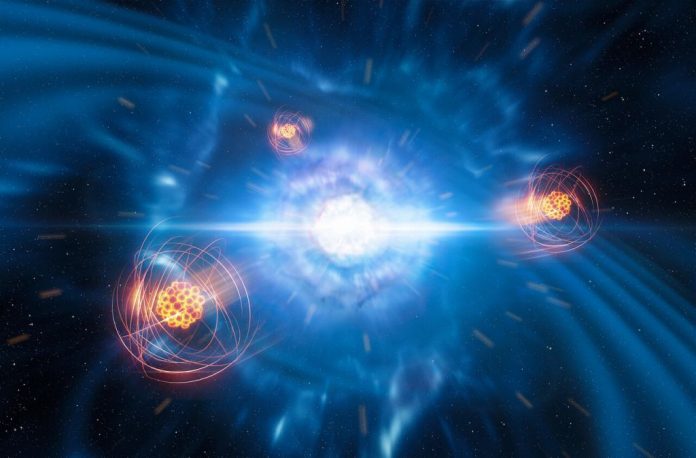Scientists have discovered that the violent collision between two neutron stars created a heavy element commonly used in fireworks. According to the astronomers, their latest discovery can help the scientific community in understanding the origin of heavy elements.
The neutron star merger GW170817 was a historic first for astronomy. The gravitational interaction was detected by the LIGO and Virgo observatories, and the subsequent kilonova explosion was seen by many optical instruments. The data continues to be examined to help us learn as much as we can about this special event.
“By reanalysing the 2017 data from the merger, we have now identified the signature of one heavy element in this fireball, strontium, proving that the collision of neutron stars creates this element in the universe,” lead author Darach Watson, from the University of Copenhagen in Denmark, said in a statement.
The process is known as “rapid neutron capture” or, more simply, r-process. Since the very first neutron star collision detection, the data has strongly shown that this process is in effect, but the complexity of neutron star collisions makes the identification of any single element difficult. At least until now.
“We actually came up with the idea that we might be seeing strontium quite quickly after the event,” explained co-author Jonatan Selsing, also at the University of Copenhagen. “However, showing that this was demonstrably the case turned out to be very difficult. This difficulty was due to our highly incomplete knowledge of the spectral appearance of the heavier elements in the periodic table.”
The r-process model was first suggested six decades ago but only now are we beginning to understand it. After the Big Bang, the universe only had hydrogen and helium (and some traces of lithium) so the rest of the elements in the periodic table had to be made by the stars.
“This is the final stage of a decades-long chase to pin down the origin of the elements,” said Watson. “We know now that the processes that created the elements happened mostly in ordinary stars, in supernova explosions, or in the outer layers of old stars. But, until now, we did not know the location of the final, undiscovered process, known as rapid neutron capture, that created the heavier elements in the periodic table.”
The results appear today in the journal Nature















